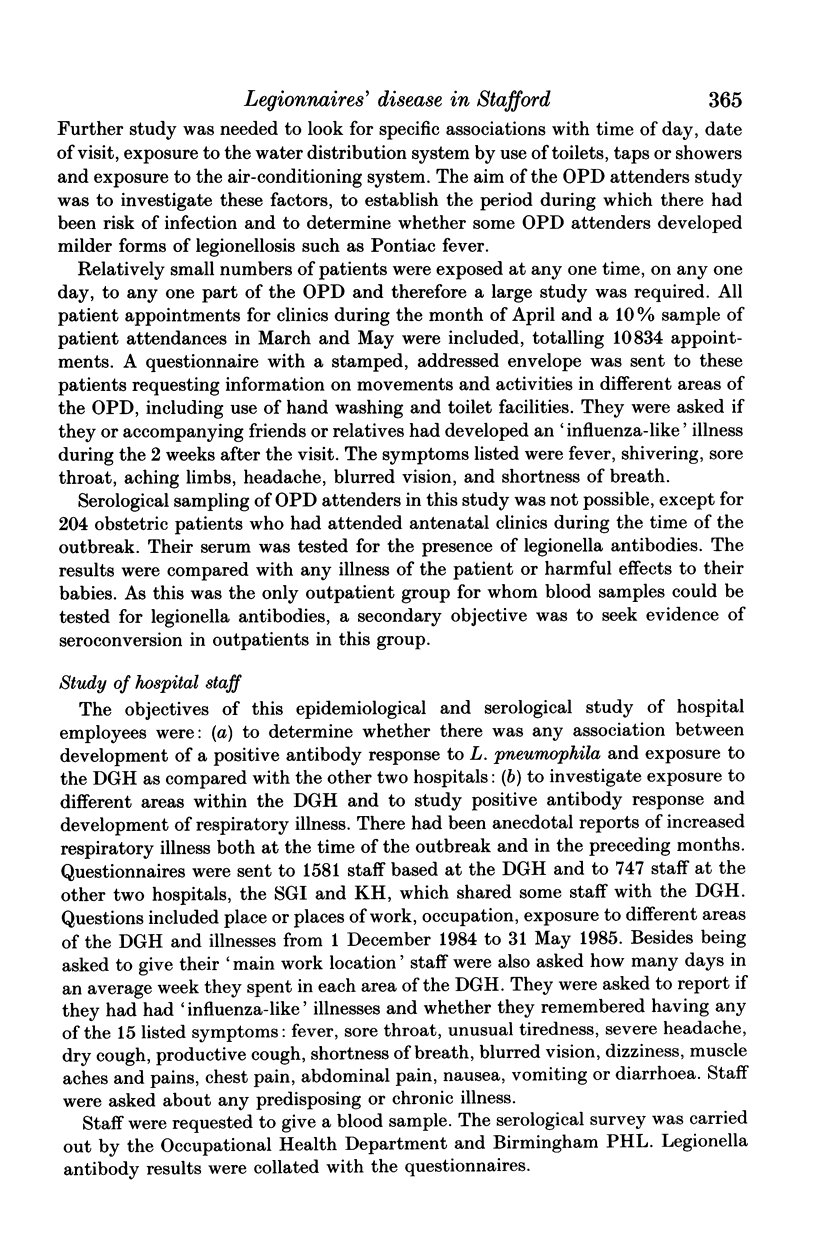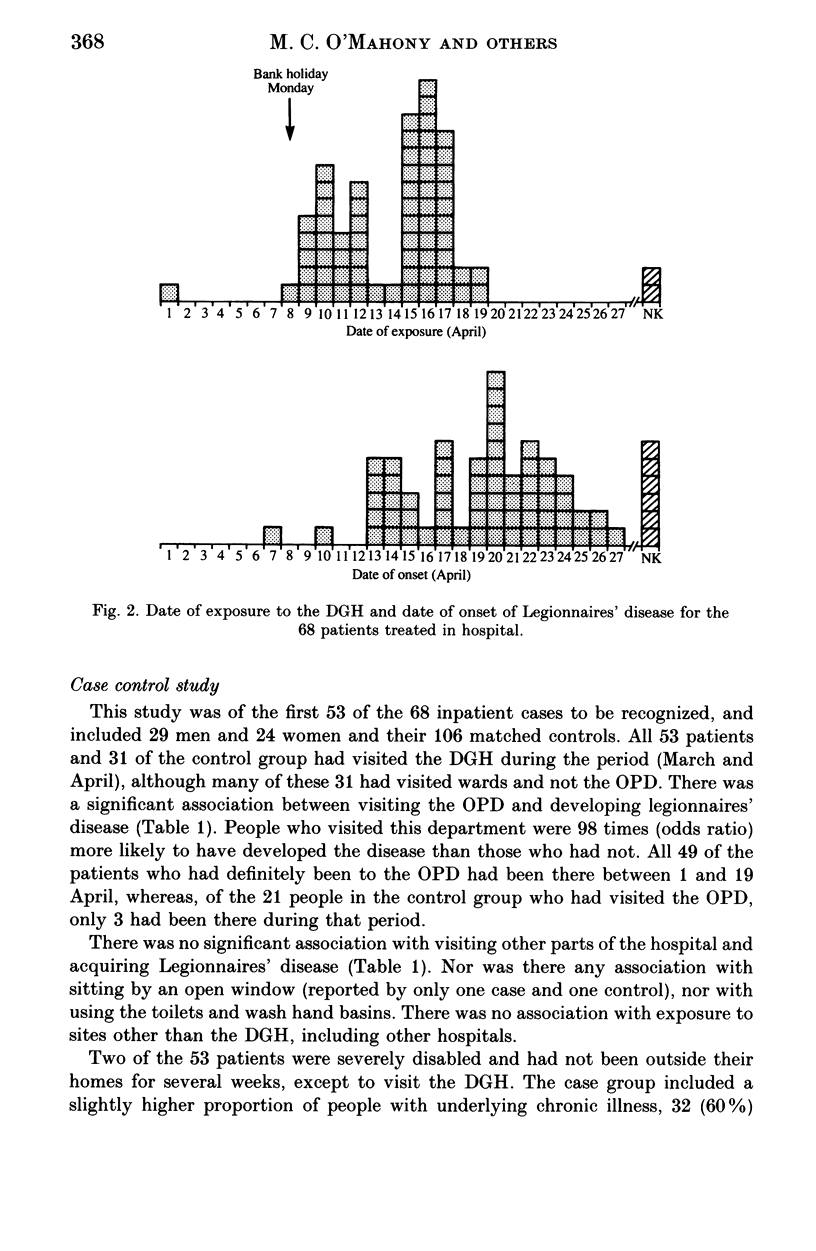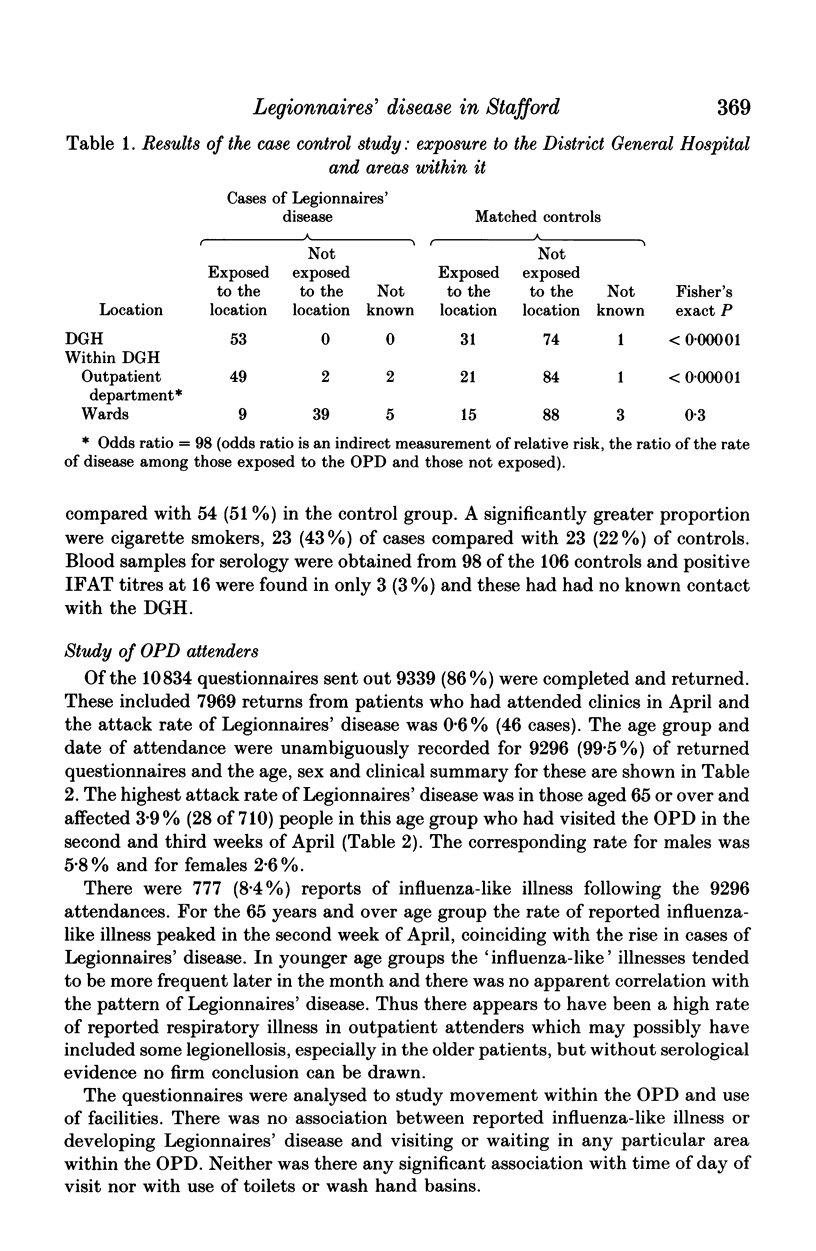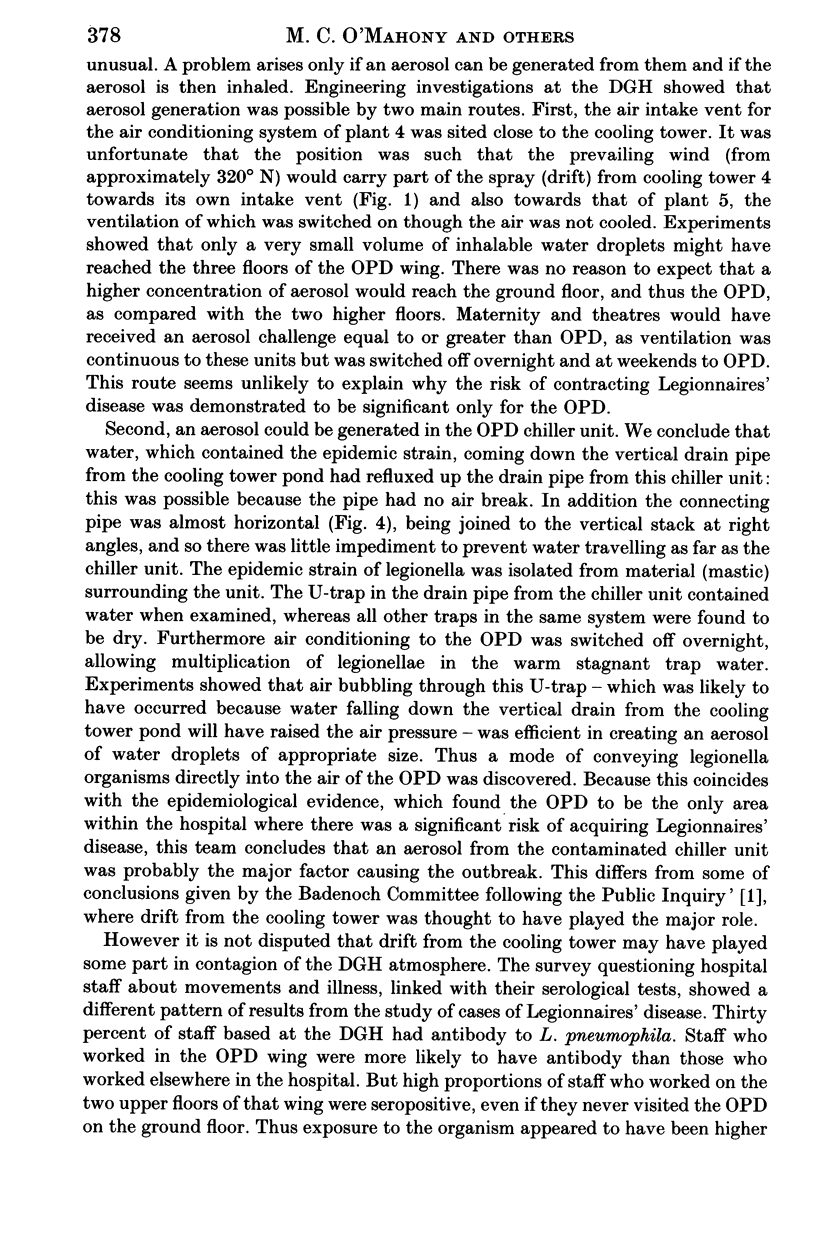Abstract
A large outbreak of Legionnaires' disease was associated with Stafford District General Hospital. A total of 68 confirmed cases was treated in hospital and 22 of these patients died. A further 35 patients, 14 of whom were treated at home, were suspected cases of Legionnaires' disease. All these patients had visited the hospital during April 1985. Epidemiological investigations demonstrated that there had been a high risk of acquiring the disease in the out patient department (OPD), but no risk in other parts of the hospital. The epidemic strain of Legionella pneumophila, serogroup 1, subgroup Pontiac 1a was isolated from the cooling water system of one of the air conditioning plants. This plant served several departments of the hospital including the OPD. The water in the cooling tower and a chiller unit which cooled the air entering the OPD were contaminated with legionellae. Bacteriological and engineering investigations showed how the chiller unit could have been contaminated and how an aerosol containing legionellae could have been generated in the U-trap below the chiller unit. These results, together with the epidemiological evidence, suggest that the chiller unit was most likely to have been the major source of the outbreak.
Nearly one third of hospital staff had legionella antibodies. These staff were likely to have worked in areas of the hospital ventilated by the contaminated air conditioning plant, but not necessarily the OPD. There was evidence that a small proportion of these staff had a mild legionellosis and that these `influenza-like' illnesses had been spread over a 5-month period. A possible explanation of this finding is that small amounts of aerosol from cooling tower sources could have entered the air-intake and been distributed throughout the areas of the hospital served by this ventilation system. Legionellae, subsequently found to be of the epidemic strain, had been found in the cooling tower found in November 1984 and thus it is possible that staff were exposed to low doses of contaminated aerosol over several months.
Control measures are described, but it was later apparent that the outbreak had ended before these interventions were introduced. The investigations revealed faults in the design of the ventilation system.
Full text
PDF



















Selected References
These references are in PubMed. This may not be the complete list of references from this article.
- Bartlett C. L., Bibby L. F. Epidemic legionellosis in England and Wales 1979--1982. Zentralbl Bakteriol Mikrobiol Hyg A. 1983 Jul;255(1):64–70. [PubMed] [Google Scholar]
- Druett H. A., May K. R. Unstable germicidal pollutant in rural air. Nature. 1968 Oct 26;220(5165):395–396. doi: 10.1038/220395a0. [DOI] [PubMed] [Google Scholar]
- Edelstein P. H. Improved semiselective medium for isolation of Legionella pneumophila from contaminated clinical and environmental specimens. J Clin Microbiol. 1981 Sep;14(3):298–303. doi: 10.1128/jcm.14.3.298-303.1981. [DOI] [PMC free article] [PubMed] [Google Scholar]
- Fisher-Hoch S. P., Bartlett C. L., Tobin J. O., Gillett M. B., Nelson A. M., Pritchard J. E., Smith M. G., Swann R. A., Talbot J. M., Thomas J. A. Investigation and control of an outbreaks of legionnaires' disease in a district general hospital. Lancet. 1981 Apr 25;1(8226):932–936. doi: 10.1016/s0140-6736(81)91626-3. [DOI] [PubMed] [Google Scholar]
- Fraser D. W., Tsai T. R., Orenstein W., Parkin W. E., Beecham H. J., Sharrar R. G., Harris J., Mallison G. F., Martin S. M., McDade J. E. Legionnaires' disease: description of an epidemic of pneumonia. N Engl J Med. 1977 Dec 1;297(22):1189–1197. doi: 10.1056/NEJM197712012972201. [DOI] [PubMed] [Google Scholar]
- Taylor A. G., Harrison T. G. Serological tests for Legionella pneumophila serogroup 1 infections. Zentralbl Bakteriol Mikrobiol Hyg A. 1983 Jul;255(1):20–26. [PubMed] [Google Scholar]
- Tillett H. E. Statistical analysis of case-control studies of communicable diseases. Int J Epidemiol. 1986 Mar;15(1):126–133. doi: 10.1093/ije/15.1.126. [DOI] [PubMed] [Google Scholar]
- Timbury M. C., Donaldson J. R., McCartney A. C., Fallon R. J., Sleigh J. D., Lyon D., Orange G. V., Baird D. R., Winter J., Wilson T. S. Outbreak of Legionnaires' disease in Glasgow Royal Infirmary: microbiological aspects. J Hyg (Lond) 1986 Dec;97(3):393–403. doi: 10.1017/s0022172400063580. [DOI] [PMC free article] [PubMed] [Google Scholar]
- Watkins I. D., Tobin J. O., Dennis P. J., Brown W., Newnham R., Kurtz J. B. Legionella pneumophila serogroup 1 subgrouping by monoclonal antibodies--an epidemiological tool. J Hyg (Lond) 1985 Oct;95(2):211–216. doi: 10.1017/s0022172400062641. [DOI] [PMC free article] [PubMed] [Google Scholar]


